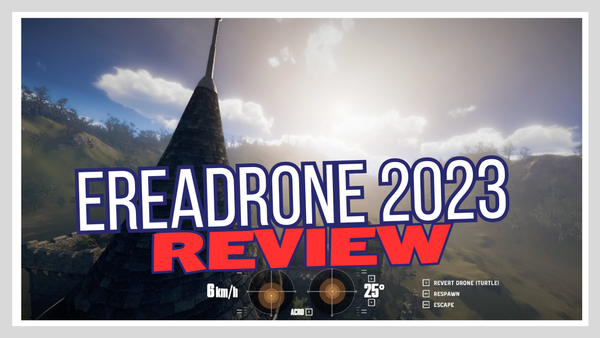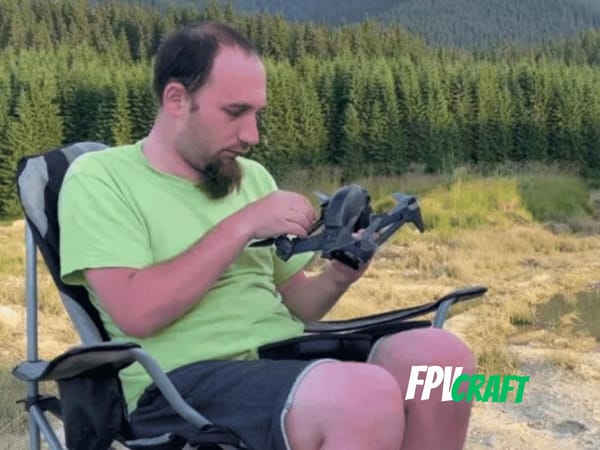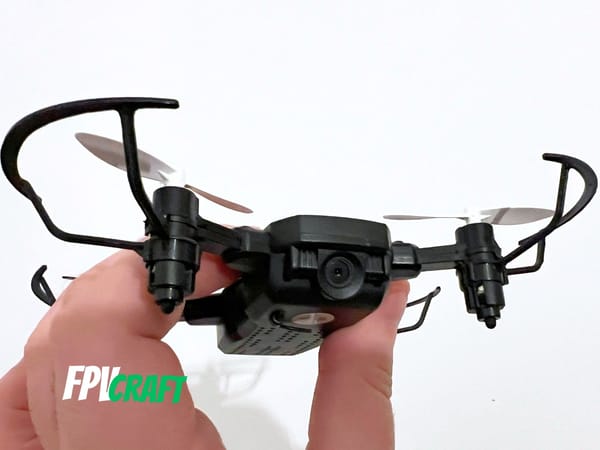Can you fly DJI FPV Drone in Normal Mode? Pros and Cons
As challenging to fly the DJI FPV may be, the normal mode could be the approach for a beginner. Fancy to read more?
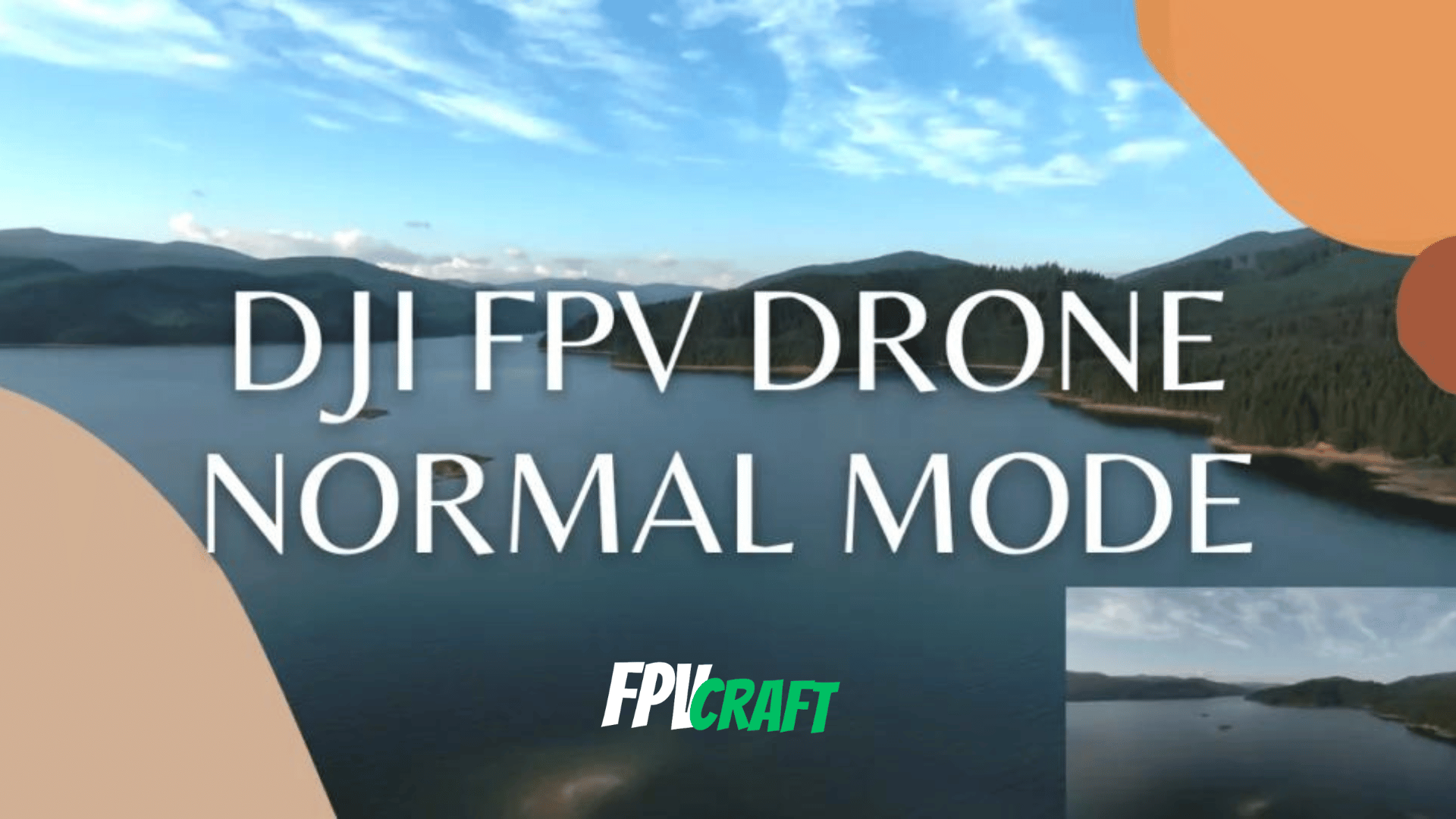
The DJI FPV drone is specifically made to fly in manual mode in order to benefit the drone’s capabilities.
It is a fantastic machine capable of taking amazing cinematic footage, and the immersive experience you have when you fly in FPV mode is unique.
However, on top of the manual mode capabilities, the DJI FPV drone also has sport and normal modes.
Flying the DJI FPV drone in normal mode is slightly different from any other DJI drone, with pros and cons.
If you own the DJI FPV drone and you also fly a Mavic drone, for sure, you will notice the differences. However, in this topic, I want to share with you my experience and knowledge of flying the DJI FPV drone in normal mode.
But before we dig in, let’s underline an answer paragraph.
The DJI FPV Drone was not manufactured with the intention to be mainly used in normal mode; however, the DJI FPV drone normal mode has the advantage of giving you an immersive experience when flying FPV with some obstacle avoidance sensors capable of easing the flying experience and making the flights safer.
Well, this just being said, I would strongly recommend you to keep reading because I’m about to share in this article not only my unique perspective, but I’m aiding in creating the most detailed article about flying the DJI FPV drone in normal mode.
DJI FPV Normal mode vs. other drones
There is no questioning that although the DJI FPV Drone cannot be compared with any other drones such as Mavic Air/Pro versions, spark, and so on, when we think about the capabilities of flying it in the normal mode, which is slightly inferior, we have to pinpoint the biggest advantage without any doubt: THE FPV EXPERIENCE.
The moment you put the DJI Goggles on your head, you enter another world where you surely detach yourself from reality.
It is not like with any other drones where you watch your phone screen when you are flying them. You actually have a “VR” headset on. You are there. You are flying through the bird’s eyes.
This is one thing that cannot be explained in a blog post or verbally: What do you see? Well, you see everything. Every detail of your flight, the nature and scenery from above, and as compared to the manual mode, in normal mode you can tilt the camera angle in order to see what’s below you (mostly). If you have heightened sickness, you have to take it slowly.
» Related: Tips to consider before your first DJI FPV manual mode flight.
In manual mode, like with any FPV Drones (the equivalent of acro mode), you see everything ahead while you fly (digital) at very high speed and with a lot of motion. But with the normal mode capability, you have stability like with any other drone. The DJI FPV is also the only drone available in the market (as far as I’m aware, currently) capable of both manual/acro mode and normal mode.
When you fly the DJI FPV Drone in normal mode, you take everything slowly and enjoy the view. That’s for sure. Because the point with it is not to fly it fast but to slowly capture cinematic footage while you see it in real-time through your goggles.
These details cannot be explained but only experienced. That is why most people, when they go FPV they stay FPV. For the experience and not only for the results.
» Related: Can You Fly DJI FPV in Sport Mode? How Good it is?
Camera angle mode – The good, the bad, and the ugly
The camera angle and movement are a big disadvantage of the DJI FPV drone. At the time you can fly a normal Mavic or other drones, you are able to tilt the camera angle down to 90 degrees in order to see everything below you clearly. But not with the DJI FPV drone.
With the DJI FPV Drone, the camera can be tiled from -65* to 70*. The uptilt is necessary for manual mode flights, and we are not going to use it in normal mode, however, with the limited down tilt, you are not able to tilt it down to 90 degrees, therefore, you are not able to perfectly capture the scenery below you in a direct angle whilst you fly in normal mode.
And also, if you attach an ND filter to your camera, this is obstructed even more from tilting up and down. Just to mention it.
That would be the biggest cons for the DJI FPV drone. I thought it would be a good idea to start with it.
Yet another disadvantage is the inability for the camera to be anyhow moved left or right (single-axis, tilt) or stabilized in such a way that when you make more brutal turns, it does not instantly flip the image about 20-30 degrees.
Yes, that is true. It is better to see this on a YouTube video. If you don’t do slow turns (left/right), your image is going to be tiled and not leveled with the horizon and will go +/- 10 degrees. That is indeed frustrating and will take time to learn how to perform very smooth operations when flying the DJI FPV drone in normal mode in order to take the best cinematic videos you can with this drone.
It will take you a little bit of time to get used to it, but once you learn to smooth the movements when you’re flying the DJI FPV drone in normal mode, not only that you will have an immersive experience, but you will be able to capture some astonishing footages (up to 4K60FPS).
Flight time in normal mode as compared to manual mode.
It is just a bit of logic in the middle that in normal mode, the DJI FPV drone has better flight time than in manual mode. In manual mode, depending on the camera angle (average speed), the drone can fly for about 8-10 minutes (or more). But what about normal mode?
Leaving an edge for errors, the average flight time was about 15 minutes. DJI promises about a 20 minutes flight time (or 16 minutes hovering time), and although never reaching those, still, the flight time is pretty decent (unless you have a single battery pack, which really sucks.).
With the extreme price of a battery pack, you may want to expect more from it. There are many drones with better flight times, but other FPV drones with Lipo batteries have average flight times of only a few minutes (3-5 min).
But in most cases, you can for sure afford extra packs, therefore, you won’t have to worry too much about the total flight times unless you do long-range flights.
But when you have to pay £139 more or less (similar to $ and Euro) for a battery… please DJI.
Now back to the topic. Yes, to caption this, the flight time in normal mode is an average of 20 minutes, but you can pull out around 15 minutes. Still, that’s between 5 to 8 minutes more flight time in normal mode than in manual mode.
The DJI FPV normal mode control, controller, and signal strength
While flying with the DJI goggles on, you will see two signal strengths: the remote controller and the VTX signal strength. It is expected that the video signal to fade first and have a lower range than the remote controller signal.
The signal strength does not differentiate the normal and manual modes, however, there are many other factors, such as the area you are flying (interferences) and the country (output power).
For instance, in Europe, the DJI limits its FPV drone VTX to 25mw, which limits by far the true power of the drone. But that may be another topic for another article. Now, let’s get back.
Does the signal strength of the DJI FPV Drone is different from normal mode to manual mode? No, there is absolutely no difference in either VTX or RTX strength between modes.
The DJI FPV controller (2) is probably the cheapest part. But now, talking about the normal mode, how this feels compared to a Mavic drone? Well, similar… there is not such a big difference, other than the camera is on a single axis which will require you to adapt to a new non-aggressive flight mode in normal mode.
» Related: DJI FPV Normal Mode vs. Sport Mode (explained)
Sensors, safety features, and RTH.
Obstacle sensing (forward), dual vision sensors + ToF (downward), and auxiliary light (LED), are all available only in normal mode (LED lights are available for all modes).
Like any other drone from DJI, the DJI FPV drone does have some safety sensors installed, although DJI had no obligations to do so because of the simple reason this drone is mainly featured as a fully manual FPV drone.
It is good that we have those sensors included. But it cannot compete with other drones with 360-degree obstacle avoidance sensors. It doesn’t even have to. The question is, are other drones able to fly fully manual mode (acro) like the DJI FPV drone? Nope.
That’s why we cannot thoroughly compare these safety sensors and other features with drones mainly made for safer flights.
There are just some things we cannot compare 😊
» Related: How to Protect your DJI FPV Batteries
Okay, as for the RTH function. The return to home fully works without any issues, and the DJI FPV drone automatically comes home at the return height set in the menu.
The GPS is pretty accurate, and I never had any connection issues while flying the drone.
Therefore, it does not matter what mode you are flying your DJI FPV drone. The return to home function will switch the drone automatically to normal mode. It is a life-saving feature for manual mode and a very significant addition to the normal mode.
And I almost forgot: the same RTH Button is also an emergency stop button. The emergency stop feature on the DJI FPV drone is available for all three modes (normal, sport, and manual) and when you press it, the drone stops nearly instantly and hover in place, entirely switched to normal mode (if in other modes) and awaiting for your input to further control it.
It is an amazing feature to have available not only while you fly the drone in normal mode but in all other modes as well.
Some other safety features in the menu can limit your remote controller gimbal rates in order to have smoother and safer flights. Also, you can find a dozen of advanced features. Keep in mind that most of them are only available in normal mode.
How to get the best experience of flying the DJI FPV in normal mode.
One thing I did before I even took the DJI FPV drone out for the first time (which was on normal mode) was correct a few settings and expo rates.
I will try to cover it in another topic (to be further linked here) with these settings. But for now, I want to say that these are not only amazing for capturing cinematic footage, but one thing is wrong from the very beginning:
The stick controls are way too sensitive, and it is difficult to smoothly control the drone in normal mode (in manual, is a nightmare).
» Related: How Far Can You Fly the DJI FPV Drone?
The pros and cons of flying the DJI FPV Drone in normal mode.
✅ Pros
- Immersive experience flying FPV in normal mode
- Excellent camera quality
- Decent safety features
- Average flight time
- Good image/video stabilization
- Up-to-date with today’s latest drones technology
- Regular firmware updates for the drone, goggles, batteries, and remote controller.
❌ Cons
- Limited camera angle tilt
- Difficult to stabilize when turning left/right
- It is a bit pricey
- The battery life cycle is quite low
- It does not have different automatic functions such as other DJI Drones (follow me, hand gestures, orbiting etc.)
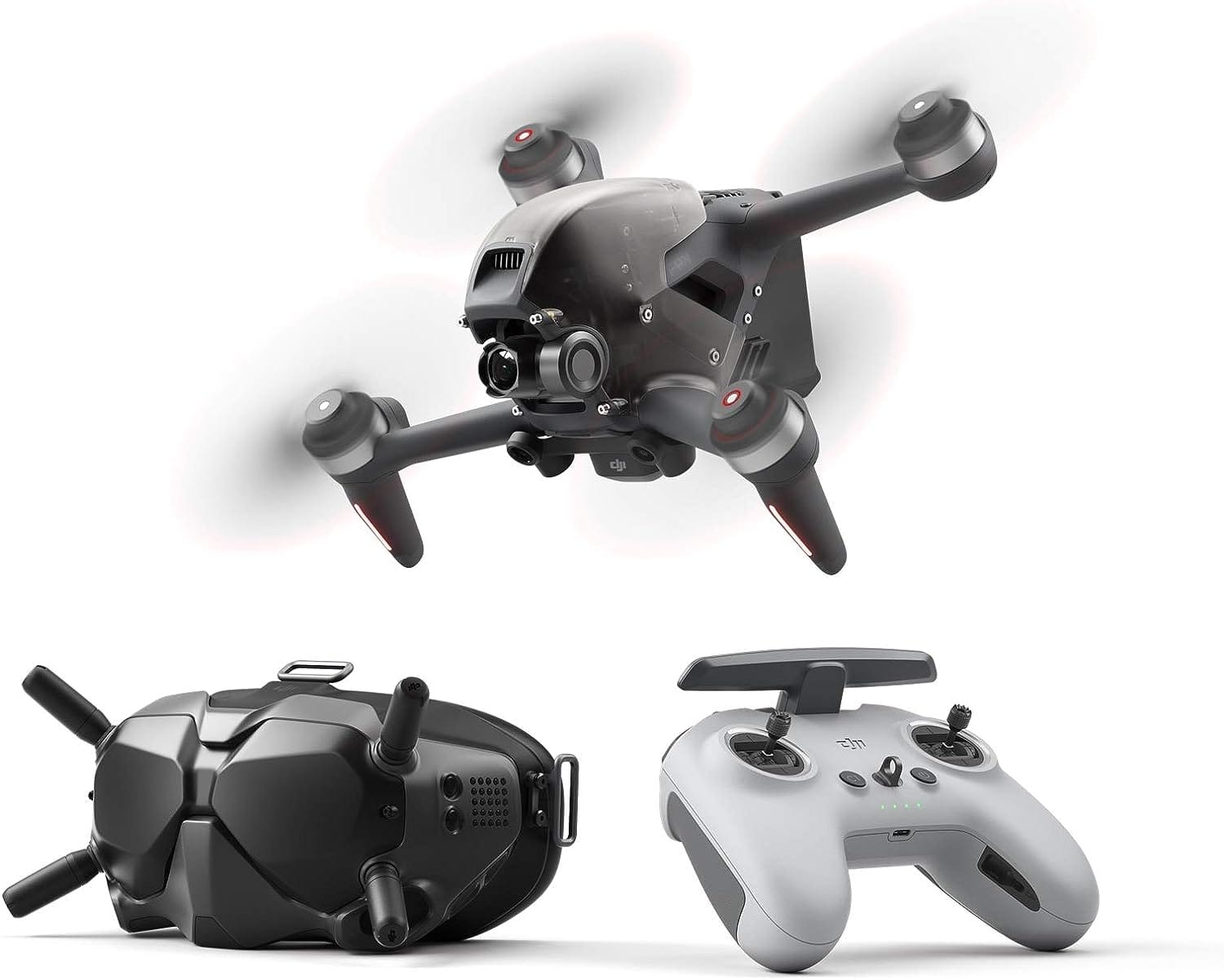
DJI FPV Drone
- IMMERSIVE FLIGHT EXPERIENCE
- 4K/60FPS VIDEO
- BRAND-NEW S MODE
- ADVANCED SAFETY FEATURES
- OCUSYNC 3.0 TRANSMISSION SYSTEM
This is an affiliate link. We earn a commission if you make a purchase, at no additional cost to you.
The charge cycle under normal circumstances is around 300 times; however, when you fly manual mode with high degree uptilt, this can be around 200 times.
Some people complained that their DJI FPV batteries died after 130-140 charges. Of course, because you are flying (and if you are flying) only in normal mode, you can squeeze some more juice out of these batteries, but for the extremely expensive prices (avg. £140 per battery), this is a big downside. – Calculate that each flight may cost you about £/$ 0.70 to £/$ 1 in terms of battery.
Also, the software is not optimized and does not have any of the functions from the Mavic Air / Pro or Spark drone, such as the ability to set your drone to follow you, to set it to orbit a target (point), does not benefit from these hand gesture features, and many others (basically, kind of all of them) – This is because the DJI FPV Drone is still not fully optimized to function in the normal mode other than basic flights. Most of them are software limitations.
Conclusion.
Although the DJI FPV drone is still not fully optimized as compared to other drones to fly in normal mode, having the FPV goggles, from my point of view, is the most significant feature that outweighs some of the disadvantages.
This makes the DJI FPV drone not only a perfect drone for starting in FPV // manual mode but a fantastic drone to be flown in normal mode.
Thank you very much for reading this. If you found this article helpful, please give us a quick share or comment about your opinion of flying the DJI FPV drone in normal mode. I will try my best to keep this article updated with my experience and new features released through further updates.
I shall say goodbye now, and I hope to see you around. Take care and stay safe! Here is another recommended article for you if you wanna check it!
» Related: 27 FPV Tips to Know Before Flying FPV Drones


